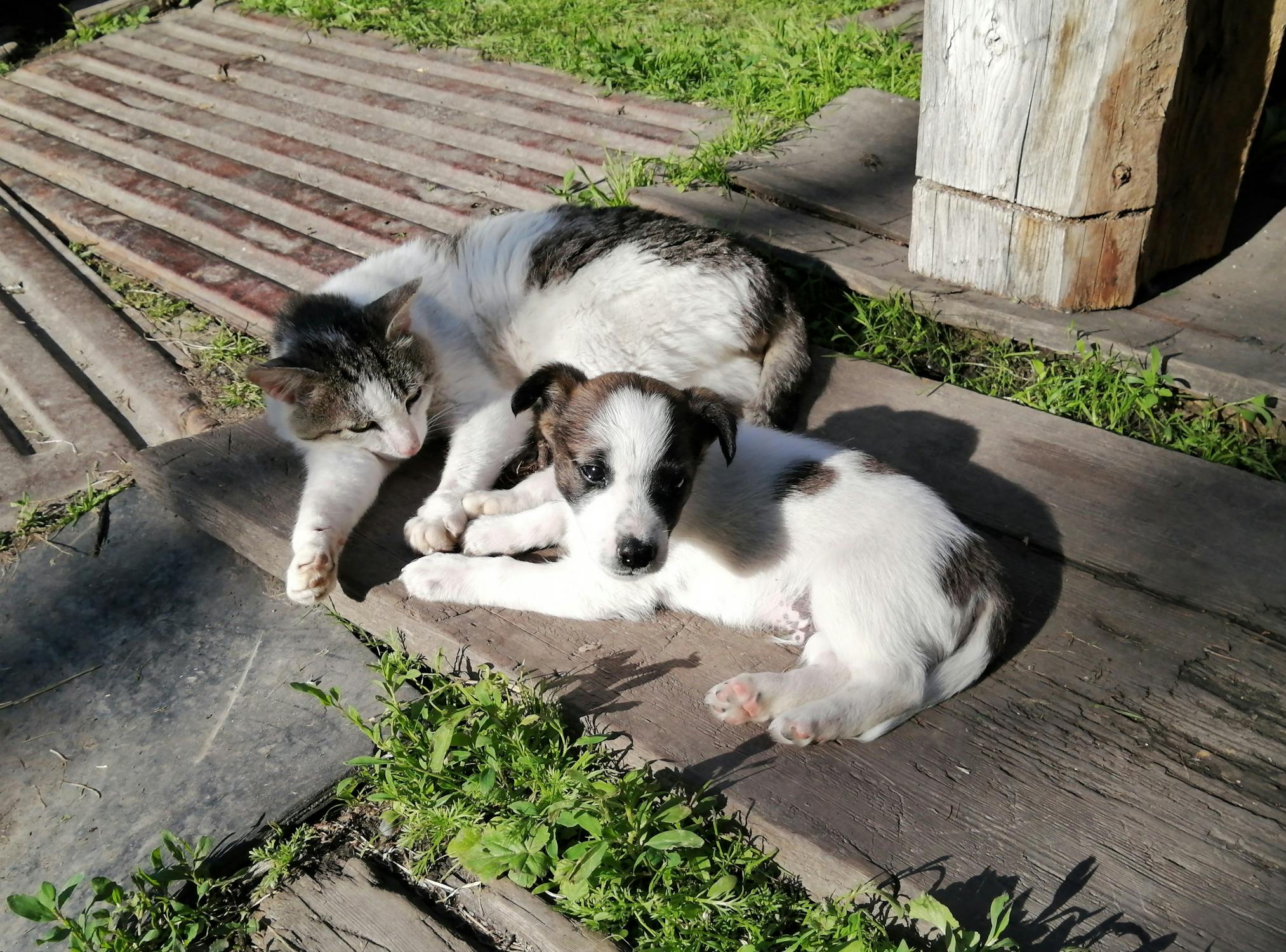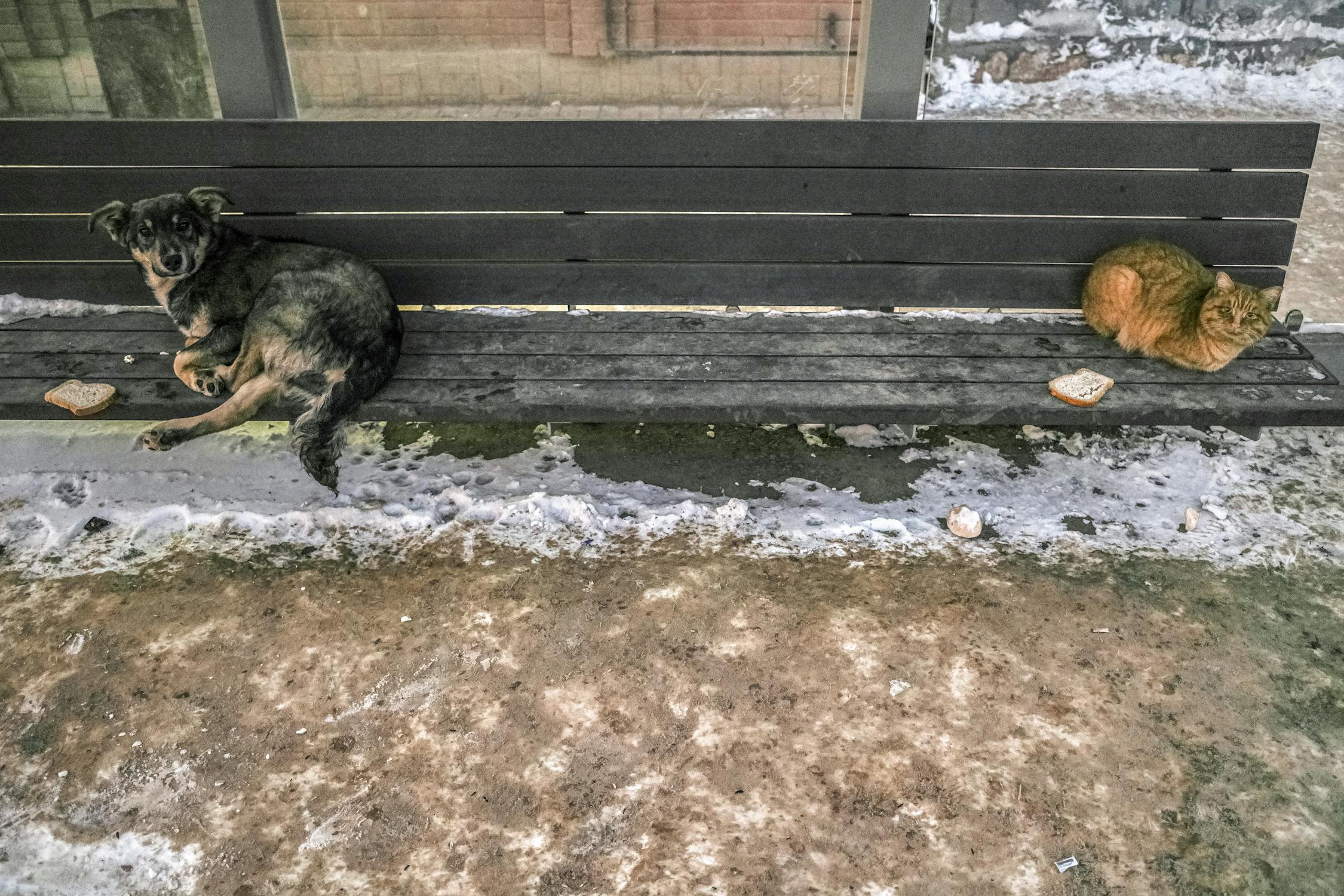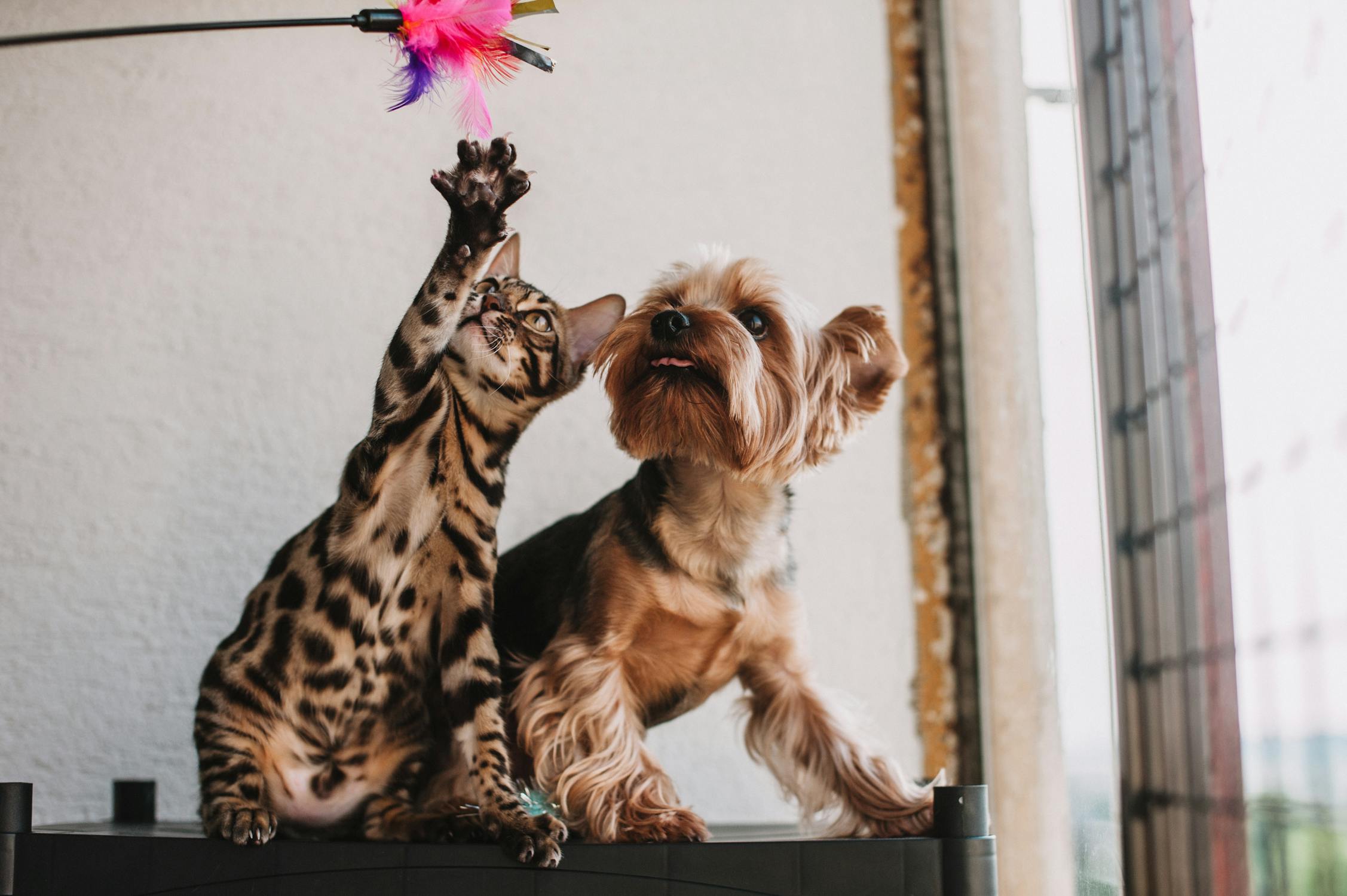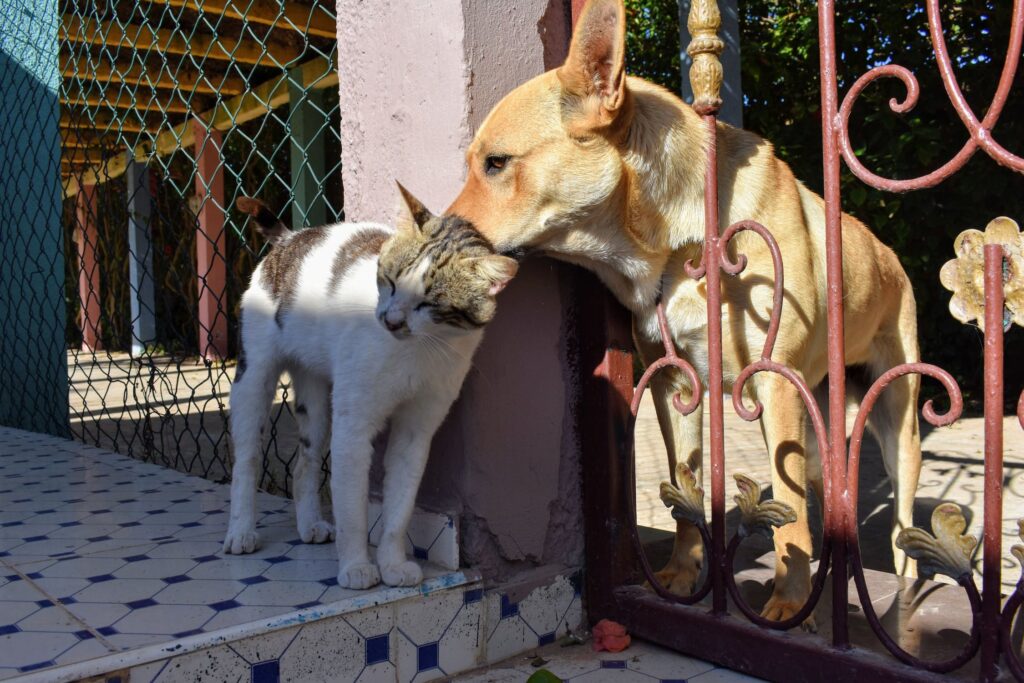Calling all pet lovers! If you’ve ever wondered whether cat food and dog food are basically the same thing, you’ve come to the right place. Get ready for a paw-some journey as we uncover the truth about these two pet food options — because we’re dying to know: are cat food and dog food the same? Let’s dive in!
Table of Contents
The Ultimate Taste Test: Dog Food and Cat Food
Now, imagine your furry friend throwing on a chef’s hat and hosting their very own cooking show! “Today, we’ll be comparing the most delicious meals for cats and dogs!” Meow-chef and Bark-master are ready to put their recipes to the test. But what makes their meals so different? Let’s find out!
Ingredient Showdown: What’s in the Bowl?
In the red corner, we have cat food! Packed with fishy goodness and essential nutrients, this feline feast is designed to cater to our purr-fect friends. Cats are obligate carnivores, which means they need a diet rich in animal-based proteins. So, grab your fishing rod and reel in some salmon, because that’s exactly what your cat dreams of!
In the blue corner, we have dog food! Woof-ly wisdom tells us that dogs are omnivores, meaning they can enjoy both animal protein and plant-based foods. That’s why dog food often includes a variety of ingredients like beef, chicken, grains, and veggies. It’s like a buffet of flavors to keep our canine pals wagging their tails!
Different Strokes for Different Folks: Nutritional Needs
Just like humans, cats and dogs have their unique nutritional requirements. For example, cats need taurine, an amino acid found in animal tissues, to maintain healthy hearts and eyes. Dogs, on the other paw, can produce taurine on their own, making it less necessary in their diet.
Another difference lies in the essential fatty acids. Cats need a fatty acid called arachidonic acid, which is found in animal fat, while dogs can produce it from other sources. It’s like cats are rocking leather jackets while dogs prefer denim!

Size Matters: Portion Control
You know what they say, “Big or small, we feed them all!” But when it comes to portion control, size does matter. Cats have smaller stomachs compared to their canine counterparts, so they require more frequent, smaller meals throughout the day. Think of it as a cat enjoying little tapas dishes while the dog settles for a hearty three-course meal.
Don’t Mix Up the Bowls: The Dangers of Cross-Feeding
Remember, just because your pets are best buds doesn’t mean their food should be too! Mixing up cat and dog food can lead to nutritional imbalances and health issues. So, let’s keep those bowls separate and avoid any gastronomic confusion in the household.
Can Dogs Eat Cat Food? The No-No Scenario
Oh no, Rover! You may think that sharing is caring, but when it comes to cat food, that’s a no-no for dogs. Cat food is formulated specifically for the dietary needs of our feline friends, with higher levels of protein and fat. While it might be tempting for dogs to indulge in those meaty morsels, too much cat food can lead to an upset tummy and potential health issues. Stick to dog food for your furry companion’s well-being.
Can Dogs Eat Cat Food in an Emergency? Time for Super Pooch!
Picture this: a cape-clad canine swooping in to save the day during an emergency! While it’s not ideal, in a pinch, a small amount of cat food won’t harm your dog. But remember, it’s only for those rare moments when dog food isn’t available. Emergency situations call for emergency measures but always return to their regular doggie diet as soon as possible. Super pooch to the rescue!

Can Dogs Eat Cat Food Long-Term? The Chronicles of Canine Cuisine
Long-term cat food consumption for dogs? Not recommended, my friends! Cats have specific dietary needs that differ from dogs. Cat food is formulated to meet a cat’s higher protein and fat requirements, which can overload a dog’s system in the long run. So, let’s keep the kitty cuisine for the kitties and serve our furry pals their specially-tailored dog food for a healthy and balanced diet.
Can Cats Eat Dog Food? The Curious Kitty Conundrum
Attention, curious kitties! While a nibble of dog food won’t cause harm, cats require a different balance of nutrients than what dog food provides. Cat food is designed to meet their unique nutritional needs, including the essential amino acid called taurine. So let’s keep the dog food for our tail-wagging buddies and serve our feline friends their own purr-fect meals.
Remember, always consult with your veterinarian for any specific dietary concerns or questions regarding your furry friend’s nutrition needs.
Choosing the Right Food for Your Furry Friend
Now that we know the differences between cat food and dog food, it’s time to dive into the exciting world of choosing the perfect food for your beloved pet! With so many options on the market, finding the right food can feel overwhelming. But fear not, pet parents! We’ve fetched some valuable tips to help you make the purr-fect choice for your feline or canine companion.
1. Consult with Your Veterinarian
When it comes to your pet’s nutrition, your veterinarian is your best ally. Schedule a visit to discuss your pet’s specific dietary needs, any health conditions, and potential allergies or sensitivities. Your vet can provide tailored recommendations and guide you toward the right food for your furry friend’s age, breed, and activity level. They’re like the nutritional gurus for your pets!

2. Read the Labels
Just like we read labels on our own food, it’s essential to do the same for our pets. Take a closer look at the ingredient list and nutritional information on pet food packaging. Look for high-quality protein sources, like real meat, as the primary ingredient. Avoid foods that contain excessive fillers, artificial additives, and preservatives. A good rule of paw is to choose foods with minimal processing and natural ingredients.
3. Consider Your Pet’s Age, Size, and Lifestyle
Different life stages and sizes require different nutritional needs. Puppies and kittens need food that supports their growth and development, while adult and senior pets have unique requirements to maintain their health. Additionally, consider your pet’s size and activity level. Active dogs may benefit from higher protein and calorie levels, while less active cats may require a more controlled calorie intake. Finding the right balance is key!
4. Take Allergies and Sensitivities into Account
Just like us, our pets can have food allergies or sensitivities. If you suspect your furry friend has a specific dietary issue, consult with your veterinarian for guidance. They may recommend an elimination diet or specialized food that avoids common allergens. Remember, it’s important to address any dietary concerns to ensure your pet’s well-being and comfort.
5. Introduce New Food Gradually
When transitioning to a new food, it’s crucial to do it gradually. Sudden changes can upset your pet’s tummy and lead to digestive issues. Start by mixing a small amount of the new food with their current food and gradually increase the proportion over several days or weeks. This gentle transition allows their digestive system to adjust and minimize any potential discomfort.

6. Monitor Your Pet’s Response
Keep an eye on how your pet responds to their new food. Look for signs of increased energy, a shiny coat, and healthy skin. Additionally, monitor their weight and bathroom habits. If you notice any negative changes or concerns, consult with your veterinarian to reassess their diet.
Remember, every pet is unique, and finding the right food may take some trial and error. Be patient and observant, and don’t hesitate to seek professional advice when needed. With a little research and care, you’ll be serving up meals that keep your furry friend happy, healthy, and licking their bowls clean!
In Conclusion: Tailoring Meals for Our Furry Friends
While both cat food and dog food are designed with our pets’ health in mind, they have distinct differences to meet their unique needs. From ingredients to portion sizes, understanding these differences helps us serve the best meals to our fur babies.
So next time you’re out shopping for your four-legged companions, remember that cats crave fishy feasts, while dogs enjoy a diverse menu of proteins and veggies. Cheers to happy bellies and wagging tails!

